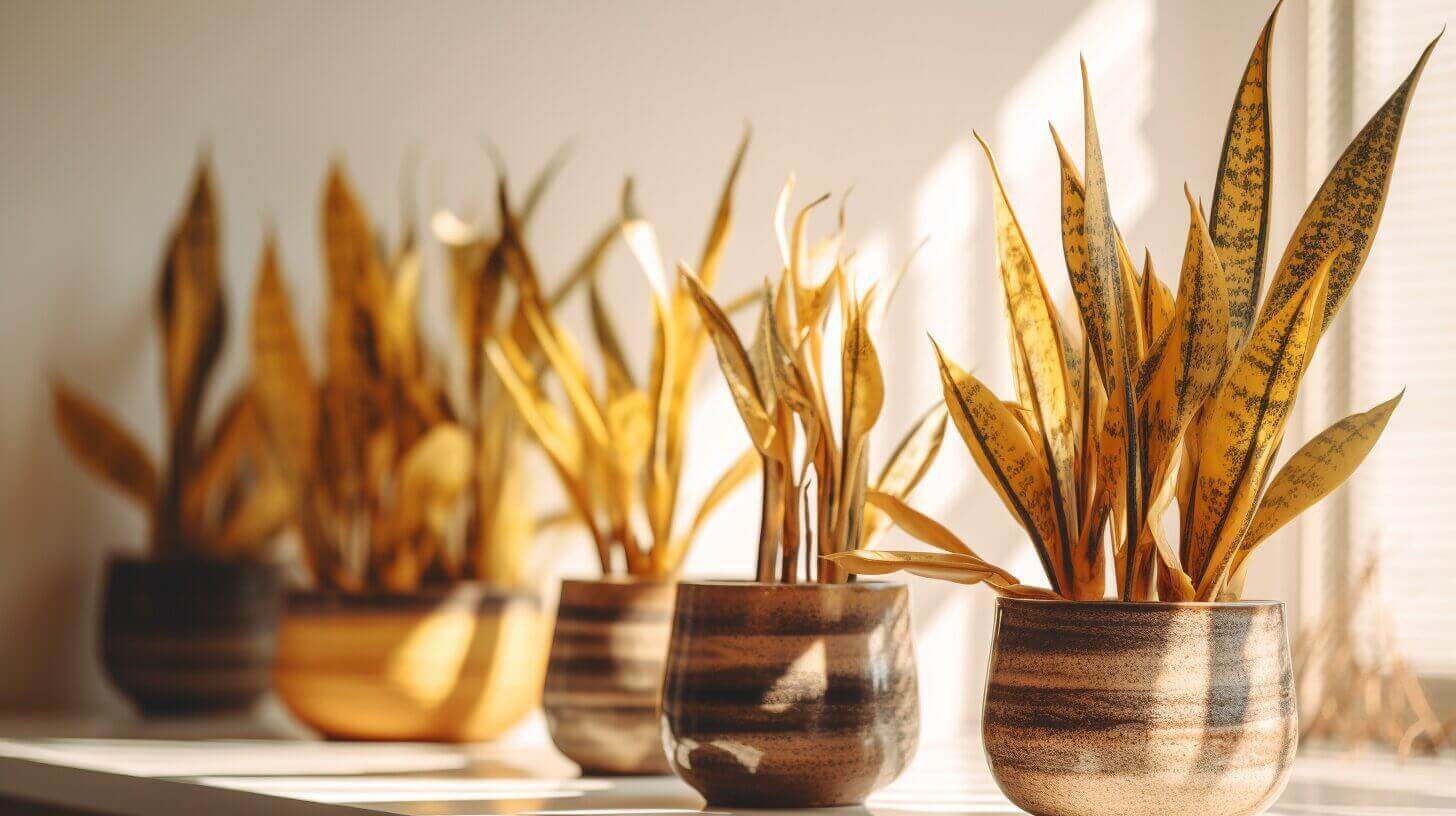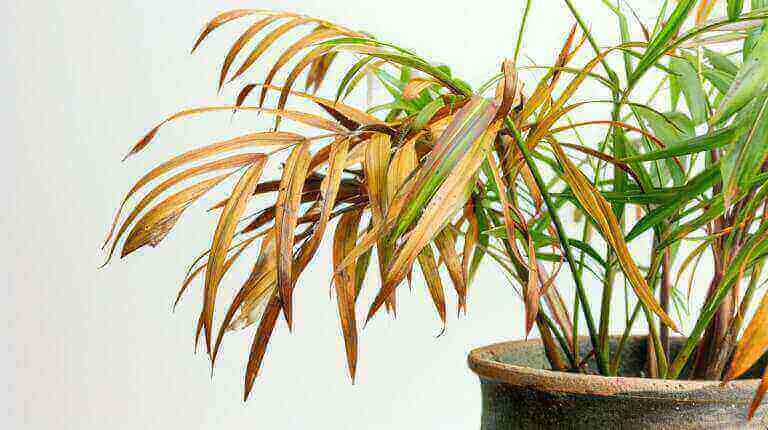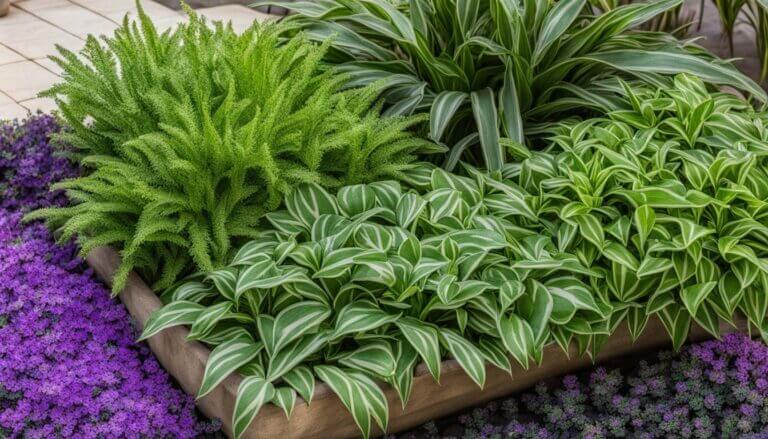Why Is My Snake Plant Leaf Turning Yellow and How to Fix Snake Plant Turning Yellow
That cheerful green companion in your home suddenly looks sick. Yellow spots splash across your snake plant’s once vibrant leaves. Don’t panic! With a little TLC, you can nurse your plant back to health. Yellowing leaves reveal common problems like too much water, not enough light, or crowded roots.
Learn the various reasons snake plant leaves turn yellow and simple, effective solutions to revive your plant. With the right adjustments to care, your snake plant will flourish again, its leaves a rich green.
Give your plant a diagnostic check, and some extra love to make those leaves look lively again. This article will decode yellowing leaves and explain how to rejuvenate your snake plant.
Key Takeaways
- Excessive irrigation and poor drainage can cause overwatering and root rot.
- Snake plants require bright, indirect light for 6-8 hours a day.
- Temperature fluctuations and extreme weather conditions can lead to yellowing leaves and stunted growth.
- Nutrient deficiency or imbalance can cause yellowing leaves and stunted growth.
Snake Plant Leaves Turn Yellow Overwatering and Root Rot
Overwatering and root rot, which are often caused by excessive irrigation and poor drainage, can lead to the yellowing of a snake plant’s leaves. Snake plants, also known as Sansevieria, are hardy plants that thrive in low-light conditions and require minimal watering. However, when their roots are constantly saturated with water, it can cause the roots to rot and prevent them from absorbing essential nutrients and oxygen. This leads to a decline in root health, which in turn affects the plant’s overall health.
Proper drainage is crucial for snake plants to prevent overwatering and root rot. When planting or repotting a snake plant, choosing a well-draining potting mix and a pot with drainage holes is important. This allows excess water to escape and prevents water from pooling around the roots. Additionally, watering should be done sparingly, allowing the soil to dry out between waterings. It is better to underwater a snake plant than to overwater it.
To ensure root health and prevent yellowing leaves, it is also important to check the soil’s moisture level before watering. Inserting a finger into the soil up to the first knuckle and watering only when the top inch of the soil is dry is a good rule of thumb. By maintaining proper drainage and monitoring watering habits, snake plant owners can prevent overwatering and root rot, keeping their plants healthy and vibrant.
Insufficient Light and Sunburn Cause Snake Plant Leaves Can Turn Yellow
Insufficient light and sunburn can also contribute to the yellowing of snake plant leaves, as the plant requires adequate sunlight to carry out photosynthesis and maintain its overall health. Snake plants, also known as Sansevieria, are native to arid regions of Africa and thrive in bright, indirect light. When placed in low light conditions, the plant may struggle to produce enough energy through photosynthesis, leading to yellowing leaves.
To meet the light requirements of your snake plant, place it in a location that receives bright, indirect light for at least six to eight hours a day. Avoid placing it in direct sunlight, as this can cause sunburn and scorch the leaves. If you notice that your snake plant’s leaves are turning yellow, gradually move it to a brighter spot to help restore its health.
In addition to proper lighting, proper watering is essential for maintaining the health of your snake plant. Overwatering can also cause the leaves to turn yellow and eventually rot. Snake plants are drought-tolerant and prefer to be slightly underwatered rather than overwatered. Allow the soil to dry out between waterings and ensure that the pot has proper drainage to prevent waterlogged roots.
Temperature Stress and Extremes
High temperatures and extreme weather conditions can significantly impact the health and growth of snake plants, causing leaf discoloration and overall stress. As climate adaptation becomes increasingly important in the face of changing weather patterns, it is crucial to understand how seasonal changes can affect our beloved indoor plants.
Here are four key points to consider:
- Temperature fluctuations: Snake plants thrive in temperatures between 60°F and 85°F (15°C and 29°C). Extreme heat or cold can lead to yellowing leaves and stunted growth.
- Humidity levels: Snake plants prefer moderate humidity levels, around 40-50%. High humidity can promote fungal diseases, while low humidity can cause leaf browning and curling.
- Air circulation: Good airflow is essential for snake plants. Stagnant air can lead to mold fungal growth, and leaf discoloration.
- Seasonal changes: Snake plants may experience stress during seasonal transitions. Sudden changes in temperature and light levels can cause leaves to turn yellow or brown.
To help your snake plant adapt to changing climate conditions, consider providing consistent temperature and humidity levels, ensuring proper air circulation, and gradually acclimating the plant to seasonal changes.
Nutrient Deficiency and Imbalance
Adequate nutrition and a balanced nutrient profile are crucial for snake plants’ optimal growth and development. Nutrient deficiency or imbalance can lead to various symptoms, such as yellowing leaves or stunted growth. Understanding the fertilizer requirements and maintaining the appropriate soil pH are important factors in ensuring the health of your snake plant.
Snake plants are generally low-maintenance but require proper nutrition to thrive. They benefit from a balanced fertilizer that contains equal amounts of nitrogen, phosphorus, and potassium (N-P-K). It is recommended to use a slow-release fertilizer during the growing season, applying it according to the instructions on the packaging.
Soil pH is another important consideration. Snake plants prefer slightly acidic to neutral soil, with a pH range of 6.0 to 7.0. Nutrient availability can be affected if the pH is too high or too low, leading to deficiencies or imbalances. Regularly testing the soil pH and adjusting it if necessary can help ensure the plant receives the nutrients it needs.
Pests and Diseases
Several common pests and diseases can adversely affect the health of snake plants, including spider mites, mealybugs, root rot, and leaf spot, necessitating timely intervention and appropriate treatments. Snake plants are beloved for their hardiness and ability to thrive in low-light conditions. Still, they are not immune to the challenges posed by pests and diseases. Snake plant owners need to be aware of these issues and take proactive measures to prevent and treat them.
Here are four common pests and diseases that can affect snake plants and how to address them:
- Spider mites: These tiny pests can cause yellowing leaves and webbing on the plant. To treat spider mites, isolate the affected plant and wash the leaves with a gentle soap solution. Regularly misting the leaves can also help prevent infestations.
- Mealybugs: These small, white insects can cause yellowing and wilting of the leaves. To remove mealybugs, dab them with a cotton swab soaked in rubbing alcohol. Regularly inspect your snake plant for signs of infestation.
- Root rot: Overwatering can lead to root rot, which causes the leaves to turn yellow and mushy. To prevent root rot, ensure proper drainage and allow the soil to dry out between waterings. If root rot has already occurred, repot the plant in fresh, well-draining soil.
- Leaf spot: This fungal disease causes brown or black spots on the leaves, which can eventually turn yellow. To treat leaf spots, remove affected leaves and avoid overwatering. Fungicidal sprays may also be used as a preventative measure.
Frequently Asked Questions
Can Fixing Curled Leaves on my Snake Plant Prevent It from Turning Yellow?
Fixing curling snake plant leaves might not necessarily prevent it from turning yellow. Curling leaves are often caused by environmental factors like overwatering or underwatering, low humidity, or excessive sunlight. To prevent yellowing, ensure your snake plant receives adequate light, water it sparingly, and maintain a moderate indoor humidity level.
Can the Same Methods Used to Revive a Drooping Snake Plant Be Applied to a Yellowing Snake Plant?
When it comes to reviving a drooping snake plant, the same methods may not necessarily be effective for a yellowing snake plant. While both issues indicate a certain level of plant distress, the causes and treatments might differ. Understanding the underlying reasons for each problem is crucial in determining how to revive a drooping snake plant or address a yellowing one. Consulting a gardening expert or plant care resources can provide valuable insights for successful revival.
How Often Should I Water My Snake Plant?
Snake plants’ watering frequency depends on factors such as humidity, temperature, and pot size. Signs of overwatering include yellowing leaves and root rot. It is important to strike a balance and avoid both under and overwatering.
Can I Use Tap Water to Water My Snake Plant?
Tap water can be used to water snake plants, but it’s important to allow it to sit for 24 hours to allow any chlorine to dissipate. Also, ensure you’re not overwatering, which can lead to yellowing leaves.
Can I Place My Snake Plant Near a Window With Direct Sunlight?
Placing a snake plant near a window with indirect sunlight can be beneficial as snake plants thrive in bright, indirect light. However, direct sunlight can cause yellowing. Ensure the plant receives adequate light without direct exposure to prevent yellowing.
Can I Use Regular Houseplant Fertilizer for My Snake Plant?
Using regular houseplant fertilizer for snake plants is not recommended. Using specialized snake plant fertilizer is best, as it provides the necessary nutrients and avoids over-fertilization. Organic options offer additional benefits in promoting healthy growth and preventing yellowing.
How Do I Get Rid of Spider Mites on My Snake Plant?
Controlling spider mites on a snake plant can be achieved through natural remedies. Regularly inspect the plant for signs of infestation, such as webs or tiny insects, and remove them manually. Additionally, consider using neem oil or insecticidal soap to combat these pests.
Why is my snake plant turning yellow?
There can be several reasons why your snake plant leaves may turn yellow. It could be due to overwatering, improper watering, changes in lighting conditions, or nutrient deficiencies.
How do I water my snake plant?
Snake plants are drought-tolerant, so it’s important not to overwater them. Allow the top inch of the soil to dry out before watering. Water the plant thoroughly, but ensure that excess water drains out of the pot.
What care does my snake plant need to prevent yellowing?
To keep your snake plant healthy and prevent yellowing, make sure it is placed in bright, indirect sunlight. Avoid exposing it to direct sunlight. Also, ensure the plant is not sitting in water, and the soil has good drainage.
How often should I fertilize my snake plant?
Snake plants are low-maintenance and do not require frequent fertilization. Fertilize your snake plant about once every two to three months during the growing season with a balanced, water-soluble fertilizer diluted to half the recommended strength.
What can cause yellowing snake plant leaves?
Several factors can cause snake plant leaves to turn yellow. Overwatering, underwatering, inadequate light, cold temperatures, and nutrient deficiencies are common causes. It’s important to identify and address the specific issue causing the yellowing.
How do I remove yellow leaves from my snake plant?
To remove yellow leaves from your snake plant, simply use clean and sharp scissors or pruning shears to trim the affected leaves at the base of the plant. Be sure to discard the yellow leaves properly to avoid any potential spread of pests or diseases.
How can I prevent my snake plant leaves from turning yellow?
To prevent snake plant leaves from turning yellow, ensure it is placed in a location with adequate indirect sunlight, water them appropriately, and avoid overfertilizing. Additionally, maintain a consistent temperature and humidity level to promote healthy growth.
What should I do if my snake plant leaves are turning yellow?
If your snake plant leaves are turning yellow, evaluate their watering schedule, lighting conditions, and nutrient levels. Make any necessary adjustments and provide proper care to help the plant recover and prevent further yellowing.
Why is the base of my snake plant turning yellow?
The base of a snake plant turning yellow can be a sign of root rot caused by overwatering. Check the roots for signs of rot, and if necessary, repot the plant in fresh, well-draining soil. Adjust the watering routine to ensure the soil is not waterlogged.
Can lack of water cause my snake plant leaves to turn yellow?
Yes, underwatering can cause snake plant leaves to turn yellow. It is important to water the plant when the top inch of soil is dry, allowing for adequate moisture without overwatering.







